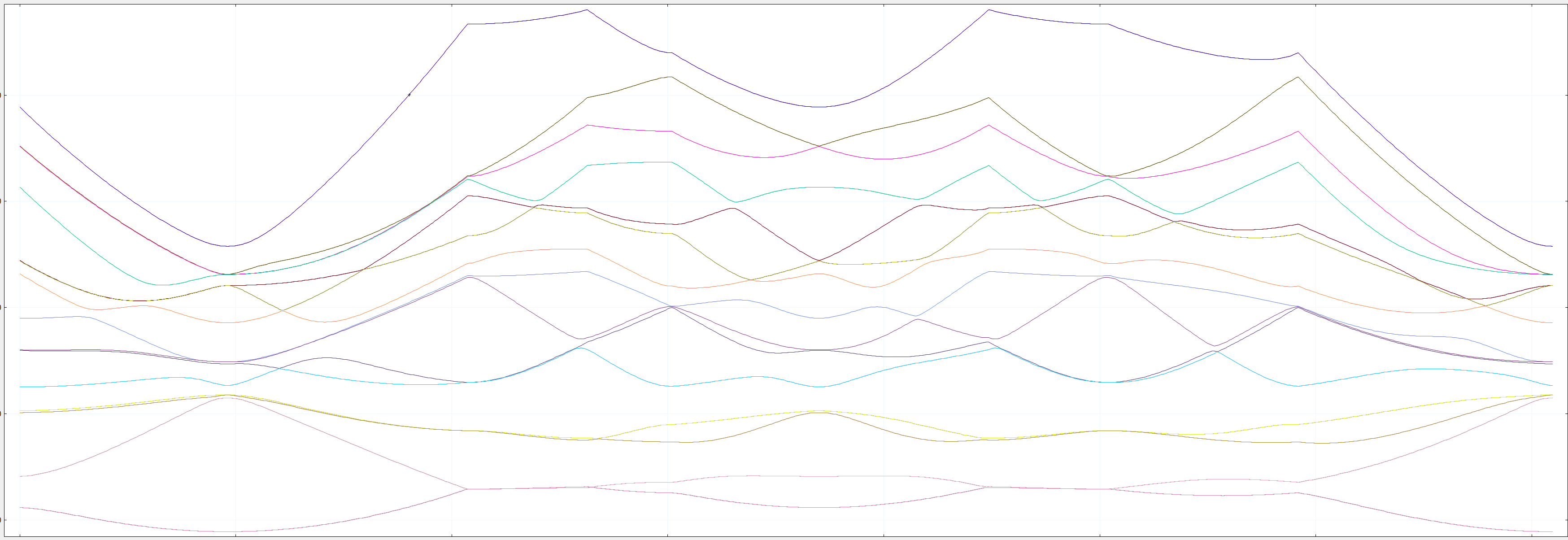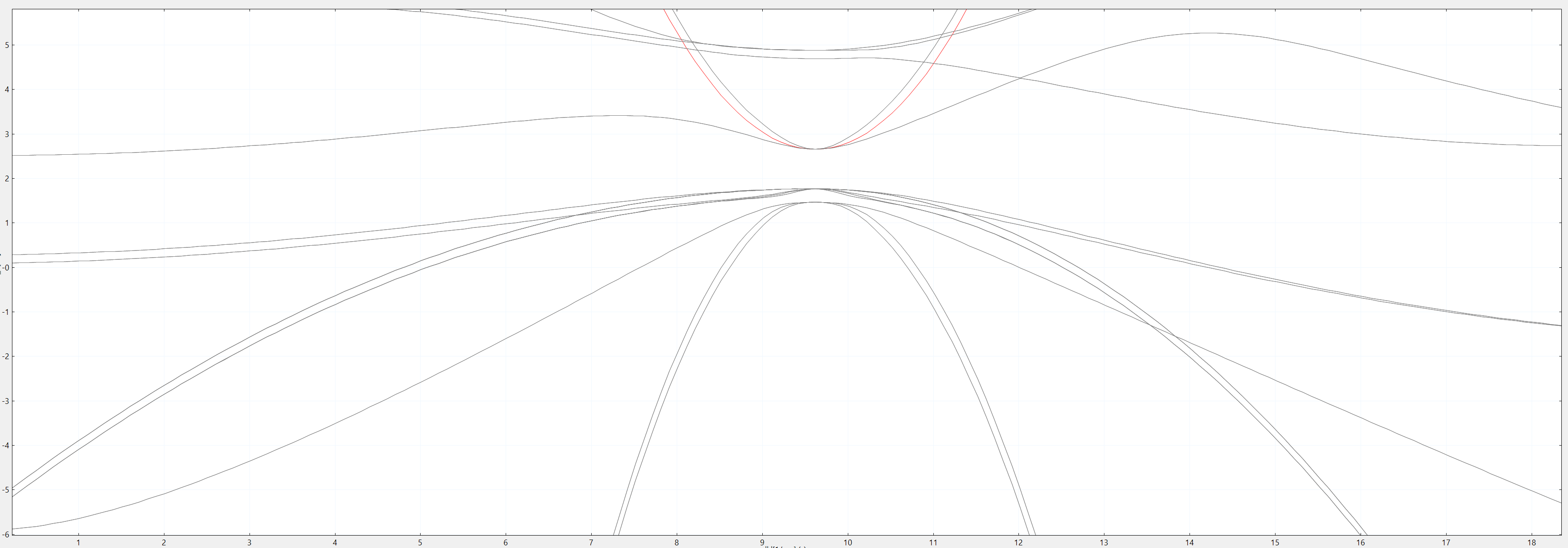5.9.9. Electronic band structures of bulk crystals with 6, 8, 14 and 30-band k.p models
- Files for the tutorial located in nextnano++\examples\electronic_band_structures
electronic-band-structure-all-kp-bulk_zb_IV_1D.nnp
- The most relevant keywords:
classical{ bulk_dispersion{ KP6{} } }classical{ bulk_dispersion{ KP8{} } }classical{ bulk_dispersion{ KP14{} } }classical{ bulk_dispersion{ KP30{} } }
- Important output files
bias_xxxxx\Bulk_dispersions\kp6\bulk_dispersion_L-G-X-W-K-L-W-X-K-G.dat bias_xxxxx\Bulk_dispersions\kp8\bulk_dispersion_L-G-X-W-K-L-W-X-K-G.dat bias_xxxxx\Bulk_dispersions\kp14\bulk_dispersion_L-G-X-W-K-L-W-X-K-G.dat bias_xxxxx\Bulk_dispersions\kp30\bulk_dispersion_L-G-X-W-K-L-W-X-K-G.dat
Results

Figure 5.9.9.1 Overlaid electronic band structures of bulk Ge, SiGe, and Si calculated using 30-band \(\mathbf{k} \cdot \mathbf{p}\) method.

Figure 5.9.9.2 Comparison of electronic band structures of Ge obtained with various methods: 1-band for teh conduction band, 6-band, 8-band, and 30-band \(\mathbf{k} \cdot \mathbf{p}\).
This page is based on the nextnano GmbH collaboration in the scope of the SiPho-G Project aiming at development of ultrahigh-speed optical components for next-generation photonic integrated circuits, and it is funded by the European Union’s Horizon 2020 research and innovation program under the grant agreement No 101017194.

Last update: 2025-10-08